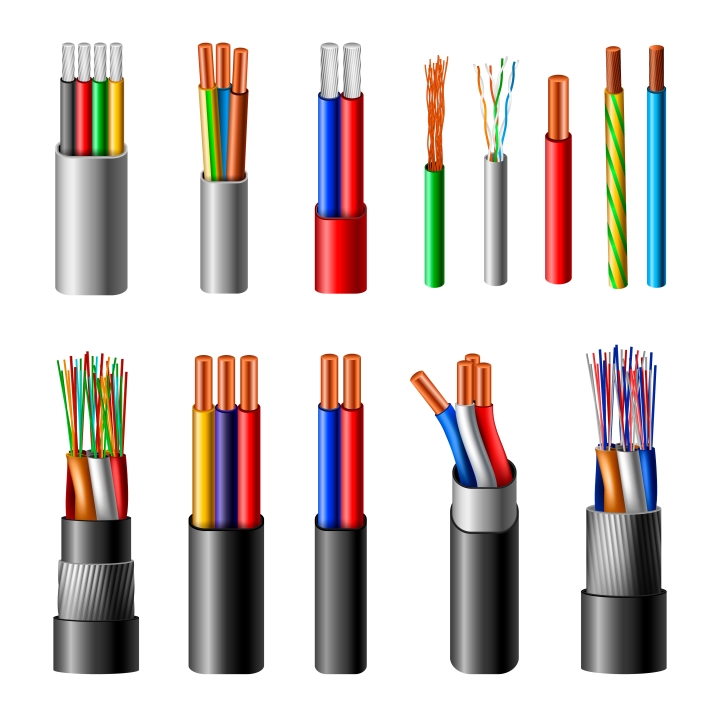Wire size varies significantly from project to project in electronics. Notice, for example, the fairly thick wires in a power cable, dangling up above, or even in your home, where an electric stove may have a 6 gauge wire, and a 10 gauge wire in an electric water heater.

On the other hand, open up your computer, and you are likely to find very small wires internally, much thinner than human hair.
Interestingly, wire thickness is counterintuitive. As noted a 6 gauge wire or cable in an electric stove is much thicker than a 30 gauge wire in a computer, but traditionally, in most things, the thicker the wire, the thicker the measurement, in this term gauge, but its the opposite in electronics.
The reason for the thickness or thinness of the gauge of a wire is due to being able to handle the number of electrons making up the electrical circuit. Called amperes, just as a fireman’s 5-inch water hose will hold a lot more water than a 5/8 inch garden hose, so the larger the wire, the more amperes you can push through the wire.
Wire varies in size from 0000, which is nearly a half-inch thick (.46 inches to be exact) to #40 wire, which is only .0031 inches thick ( the average human hair is .001 thick) and is used primarily in computers and microelectronics.
Note the amount of electricity that wires on the opposite ends of the scale can handle. A .0000 wire can handle 302 amperes of electricity, while at the opposite end of the spectrum, a 40 gauge wire, can handle .0137 amps, (something to keep in mind the next time you use your computer in a lightning storm, which can send around 30,000 amps to your house if it hits a power line.
Different wire sizes for different functions
In the home, the most common wire sizes are 4 through 18 gauge wire.
If you want an electric furnace or an electric heater, then you will be using 4 gauge wire, which handles up to 60 amps of current.
Cooktops and ranges usually use 6 gauge wire, which handles roughly 40 Amps of wiring.
If you wish to use an electric clothes dryer, a 240-volt window air conditioner, or an electric water heater, then you need then 10 gauge wiring is in order.
Kitchen, bathroom, and outdoor plugs typically require 12 gauge wiring, while most light fixtures require 14 gauge wiring.
Extension cords typically have 16 gauge wiring, and 18 gauge wiring may be found in some light-duty lighting.
Typical outlets in the home, protected by a 15 Amp circuit breaker, use either 12 gauge or 14 gauge wiring.
It should be noted, for two very good reasons, why most household communities and states require you to have a licensed electrician do household work.
One is the obvious risk of death or serious injury if you make a mistake. The other is to protect everyone from the very real possibility of fire. So before you attempt a DIY home electrical project on your actual home, be sure you know and adhere to the law.
What are lower gauge wires used for?
Radios, computers, phones, and Mp3 players are examples of using a lower gauge wire.
Computers almost always have 30 to 40 sized gauge wires within them. And usually, these are divided up. So for example, when you connect a standard HDMI connector to your computer, there are 12 pins within the HDMI interface that are connected by different wires internally.
So, if you are brave enough to try to repair your computer yourself, you have to know which wires connect to each little port.
It is vitally important to have schematics for any electronic repairs you attempt before you make a decision as to which type of wire to buy.
Moreover, note that much thinner gauge wires are as well as the electronic circuits are quite sensitive to static electricity surges.
Therefore, at a computer repair shop, you will find technicians using anti-static straps and anti-static mats to discharge the static electricity in their body which can fry vital electronic parts.
You can find a wire size chart online but just remember, know what you are doing before you attempt to make any electronic repairs.
Leave a Reply